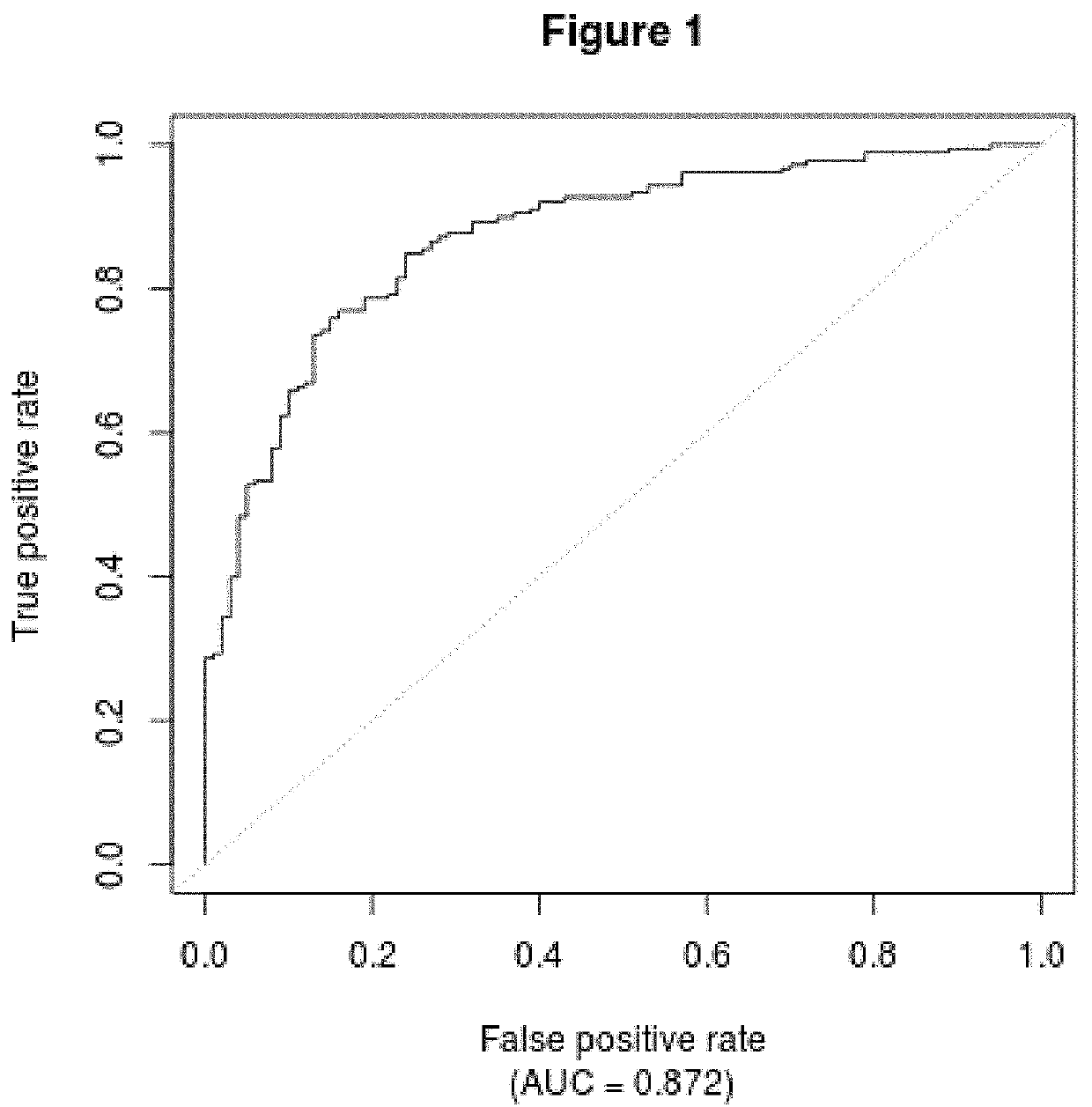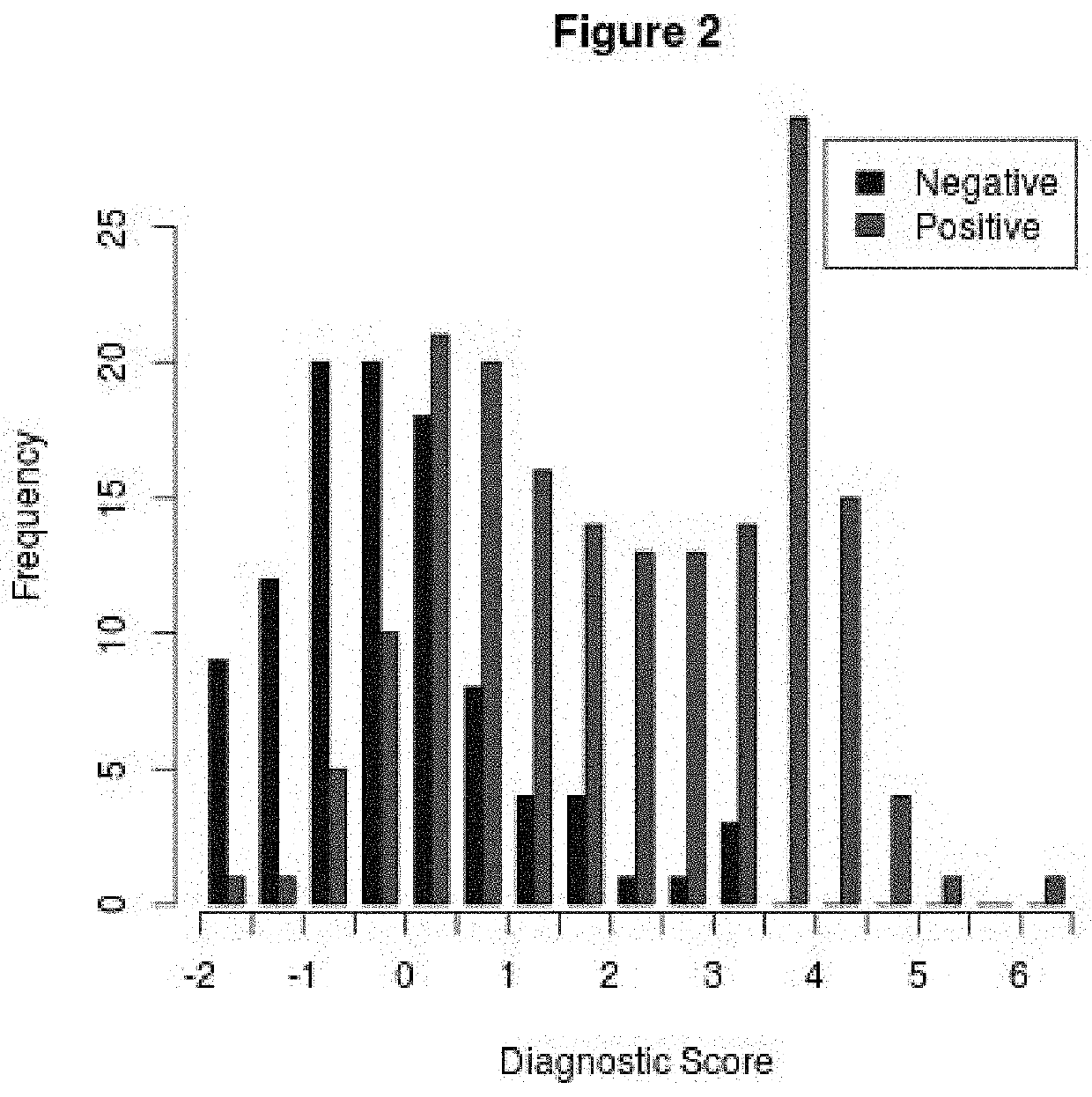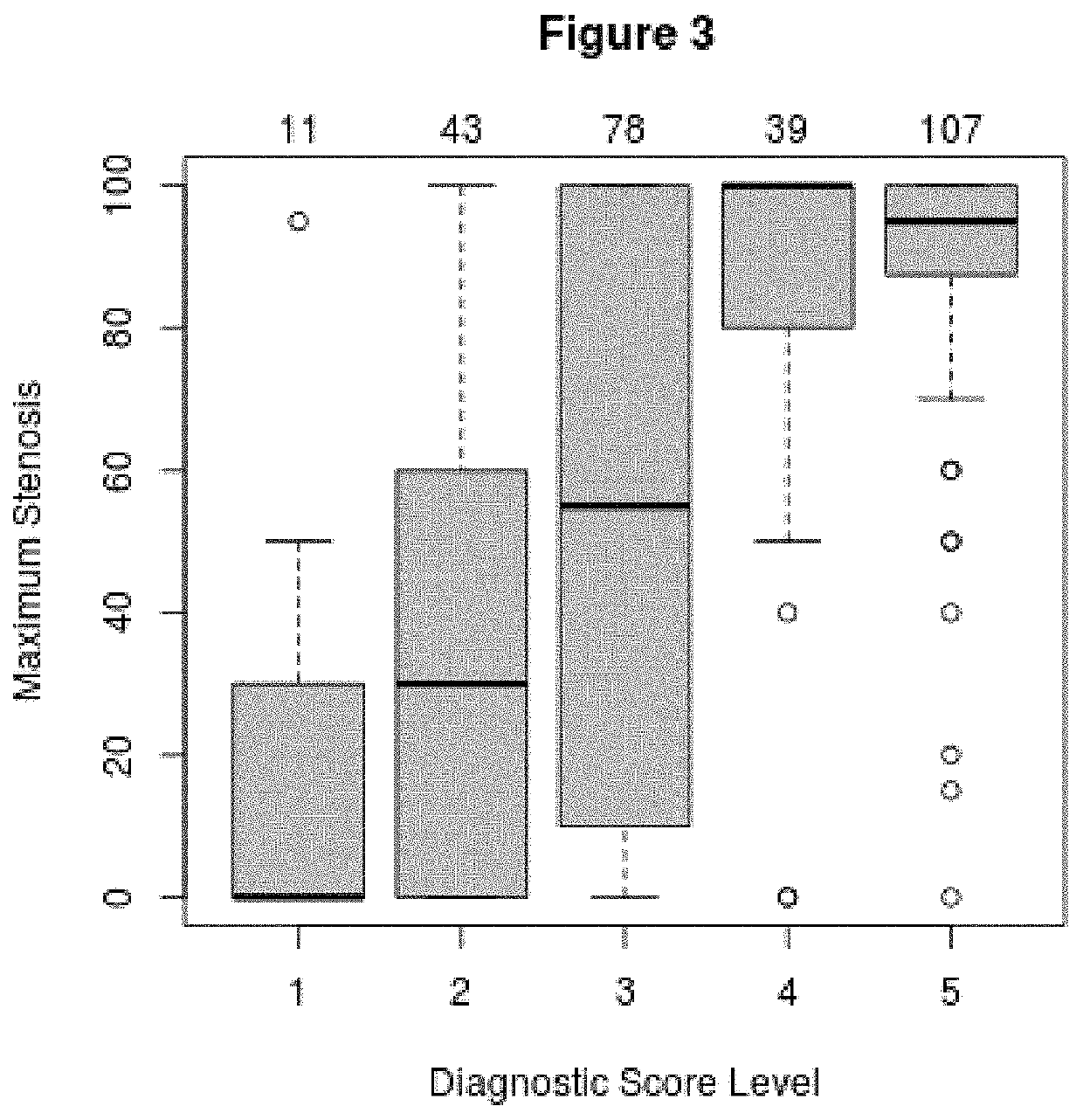Diagnostic and prognostic methods for cardiovascular diseases and events
a cardiovascular disease and prognostic method technology, applied in the field of biomarker panels and assays, can solve the problems of invasiveness, affecting the diagnosis and treatment of patients, and affecting the diagnosis and treatment of patients, and achieve the effect of facilitating the determination, facilitating the determination, and facilitating the determination of negative prognosis of cardiac outcom
- Summary
- Abstract
- Description
- Claims
- Application Information
AI Technical Summary
Benefits of technology
Problems solved by technology
Method used
Image
Examples
example 1
l and Biomarker Scoring System to Diagnose Obstructive Coronary Artery Disease (CAD), Panel FM139 / 685
[0249]A convenience sample of 1251 patients undergoing coronary and / or peripheral angiography with or without intervention between 2008 and 2011 were prospectively enrolled. Patients who received only a peripheral angiography or no catherization procedure at all were excluded from this analysis (N=244). Additionally, a chronological subset of the final 153 patients who had received either a coronary or peripheral cath were withheld from this analysis, for their potential use in further validation of these models. Patients were referred for these procedures for numerous reasons; this includes angiography following acute processes such as myocardial infarction (MI), unstable angina pectoris, and heart failure (HF), but also for non-acute processes, such as for diagnostic evaluation of stable chest pain, failed stress testing, or pre-operatively prior to heart valve surgery.
[0250]After ...
example 2
l and Biomarker Scoring System to Diagnose Obstructive Coronary Artery Disease (CAD), Panel FM46 / 572
[0273]This example demonstrates yet another non-invasive method employing a clinical and biomarker scoring system that offers, among other things, high accuracy in diagnosing the presence of anatomically significant CAD, and in providing a prognosis of cardiovascular events. This example utilized the same described methods (study design and participants, data acquisition, follow up, biomarker testing, statistics and results (Tables 1A, 3A, 5, and 6; FIGS. 18-20) as Example 1. The primary differences between Example 1 and Example 2 are the clinical variables and proteins that were utilized.
[0274]Following the described methods, from the training cohort (N=649), independent predictors of CAD ≥70% in any one vessel included three biomarkers (adiponectin, decorin, and midkine) and three clinical variables (history of myocardial infarct, history of percutaneous coronary intervention and se...
example 3
l and Biomarker Scoring System to Diagnose Obstructive Coronary Artery Disease (CAD), Panel FM02 / 410
[0282]This example demonstrates yet another non-invasive method employing a clinical and biomarker scoring system that offers, among other things, high accuracy in diagnosing the presence of anatomically significant CAD, and in providing a prognosis of cardiovascular events.
[0283]This example utilized the same described methods as Example 1 and 2 (study design, data acquisition, follow up, biomarker testing, statistics and results), with the exception of the subjects. This example included those subjects that only had a coronary catheterization, N=809, (vs. subjects with a coronary catheterization and optionally a peripheral catheterization (Tables 1B, 3B, 13, 14, 15 and 16 and FIG. 28).
[0284]The patients selected for analysis consisted of the chronologically initial 809 patients who received only a coronary angiogram. Patients who may have also received a peripheral angiogram concomi...
PUM
| Property | Measurement | Unit |
|---|---|---|
| molecular weight | aaaaa | aaaaa |
| time | aaaaa | aaaaa |
| time | aaaaa | aaaaa |
Abstract
Description
Claims
Application Information
 Login to View More
Login to View More - R&D
- Intellectual Property
- Life Sciences
- Materials
- Tech Scout
- Unparalleled Data Quality
- Higher Quality Content
- 60% Fewer Hallucinations
Browse by: Latest US Patents, China's latest patents, Technical Efficacy Thesaurus, Application Domain, Technology Topic, Popular Technical Reports.
© 2025 PatSnap. All rights reserved.Legal|Privacy policy|Modern Slavery Act Transparency Statement|Sitemap|About US| Contact US: help@patsnap.com



